Jason Smith’s biggest Oopsie
Justice for Ty Conklin!
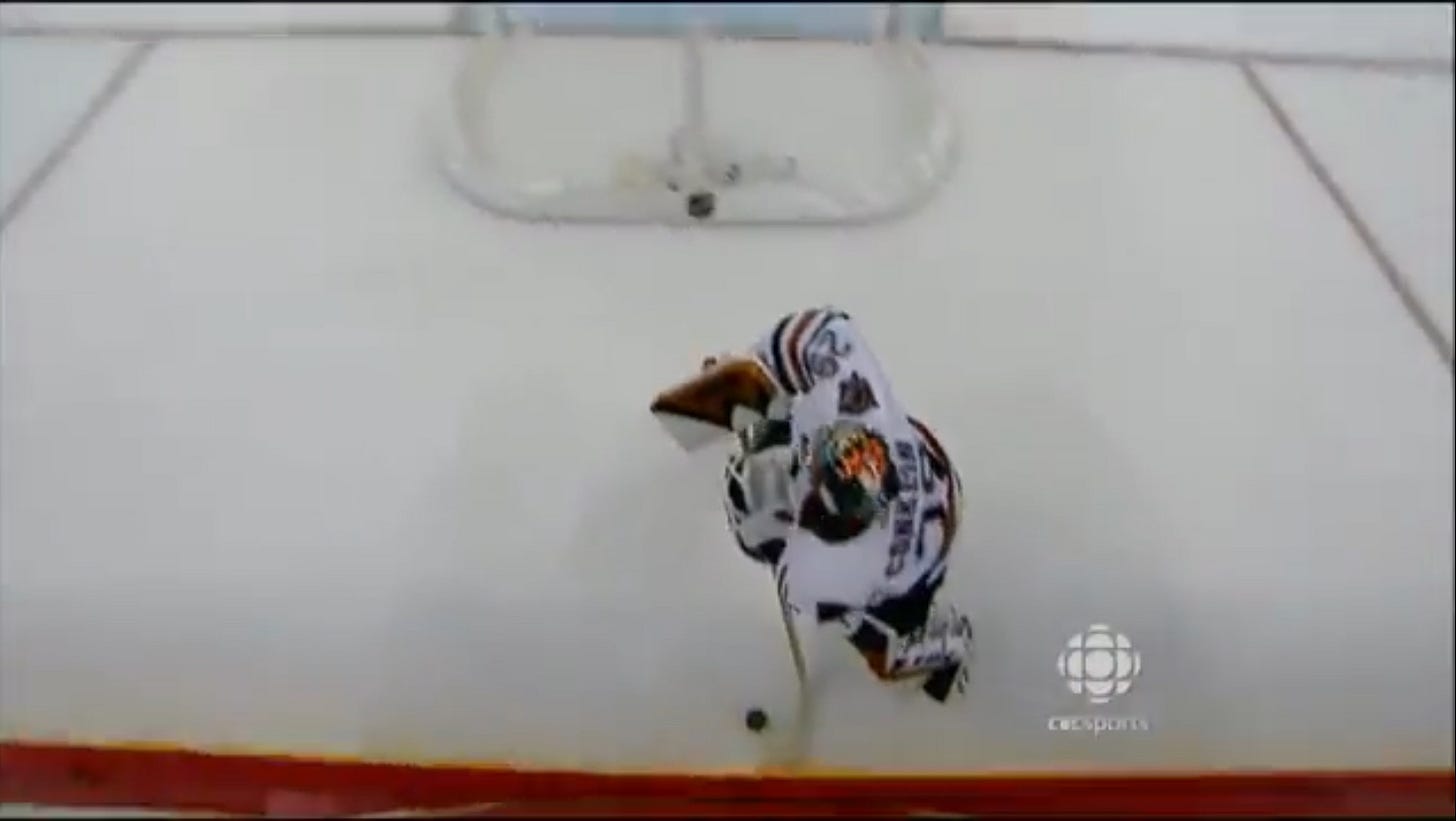
What’s the worst mistake you’ve ever made in your job? Not to open old wounds or bring back bad memories or remind you of that presentation you foolishly underprepared for, but bravely stumbled through.
Well, imagine if you weren’t blamed for that mistake — the worst mistake you’ve made in your job with the highest stakes you get away blameless.
This is what happened to Jason Smith in Game 1 of the Stanley Cup Finals. The Edmonton Oilers are tied with the Carolina Hurricanes in the last minute of regulation. But things are dire for Edmonton. Their starting goalie Dwayne Roloson has gone down with an injury earlier in the third. In to replace him is Ty Conklin.
Some of you might know this goal already. But watch this clip real quick — and pay attention to the bottom of the screen which is where the puck ends up. Did you see the play that lead to the goal? We’ll break it down.
The Play
37.1 — the puck is dumped into Edmonton’s end on Ty Conklin’s glove-hand side. This means Conklin will play the puck on his forehand. It’s shot in pretty hard from the Hurricanes’ side of centre, but it gets tipped in by Justin Williams on the other side of centre.
35.3 — Conklin plays the puck on his forehand. Jason Smith is the closest Oiler to Conklin, at about the net-side hashmarks of the blocker-side faceoff circle (i.e. the one opposite the dump-in). Brind’Amour, the closest Hurricane is just above the glove-side circle. He’s tied up with Chris Pronger. Note that this is the last time Conklin sees Smith
34.7 — Conklin has stopped the dump-in behind the net. Smith takes a route to the puck through the trapezoid. Brind’Amour has broken through Pronger and is approaching between the faceoff circle and crease to cut off a forehand pass while pressuring Conklin for the puck.
Right now there are broadly three options for Conklin. (1) rim the puck on his forehand up to Pronger (44) or Ryan Smyth (that glove sticking out offscreen) and either hope one of them picks up the puck or trust both of them to outcompete Brind’Amour for the puck. The issue is that Corey Stillman (offscreen) is coming in on the blocker-hand side, and could be a potential recipient for a pass off a turnover. (2) A hard backhand pass which is basically a non-starter because of the aforementioned Stillman and Brind’Amour not having to significantly change his trajectory. Jason Smith, meanwhile, could probably get the puck in the corner but would have two Hurricanes right on him. (3) Leave it for Jason Smith. Hindsight will vindicate two broad ideas about this play: (a) that Conklin has no idea where Smith is because (b) Conklin is rightly concerned with handling the dump-in and the beast of a man known as Rod Brind’Amour bearing in on him, making options (1) and (3) increasingly infeasible by the time Conklin gets his head up.
33.9 — Conklin, seeing Brind’Amour cutting off options (1) and (3) — mentioned above — just above the goal line goes to push the puck back to Jason Smith. But Smith is right behind Conklin. There’s maybe a foot between them. And Smith is closing that distance. He eventually stops.
33.2 — Smith bobbles the transfer. Given his current position he has to take this puck on his backhand. But his blade is closer to parallel to the goal line than it is perpendicular. He doesn’t try to absorb it at all because Smith doesn’t expect the pass. He wants to pick up the puck and turn up ice. One wonders why. Brind’Amour would be right on him. He should probably have tried to turn towards the boards and protect the puck, drawing Brind’Amour over and either reverse to Pronger or eat the puck until Pronger or Smyth arrive to support. But none of that happens, so the puck is sitting just outside the blocker-side post. Brind’Amour is right beside Conklin and has just enough space between him and the back of the net to squeeze by.
32.2 — Having slipped past both Oilers (makes sense when you put it that way), Brind’Amour grabs the puck and stuffs it into an open net at the time stamp provided.
In the span of 5 seconds, a routine dump-in has been transformed into a preventable and consequential goal. ‘Preventable’ and ‘consequential’ are coaches’ least favourite kind. Sure, Conklin could have tried the counter-rim and hope that Pronger and Smyth could pick it up, but looking at the film, it’s clear that Conklin had to deal with a hard dump-in, a hard forecheck, and didn’t have time to see what Smith was up to behind him. Smith, however, makes a suboptimal decision worse by how he receives Conklin’s pass. This is why I blame Smith.
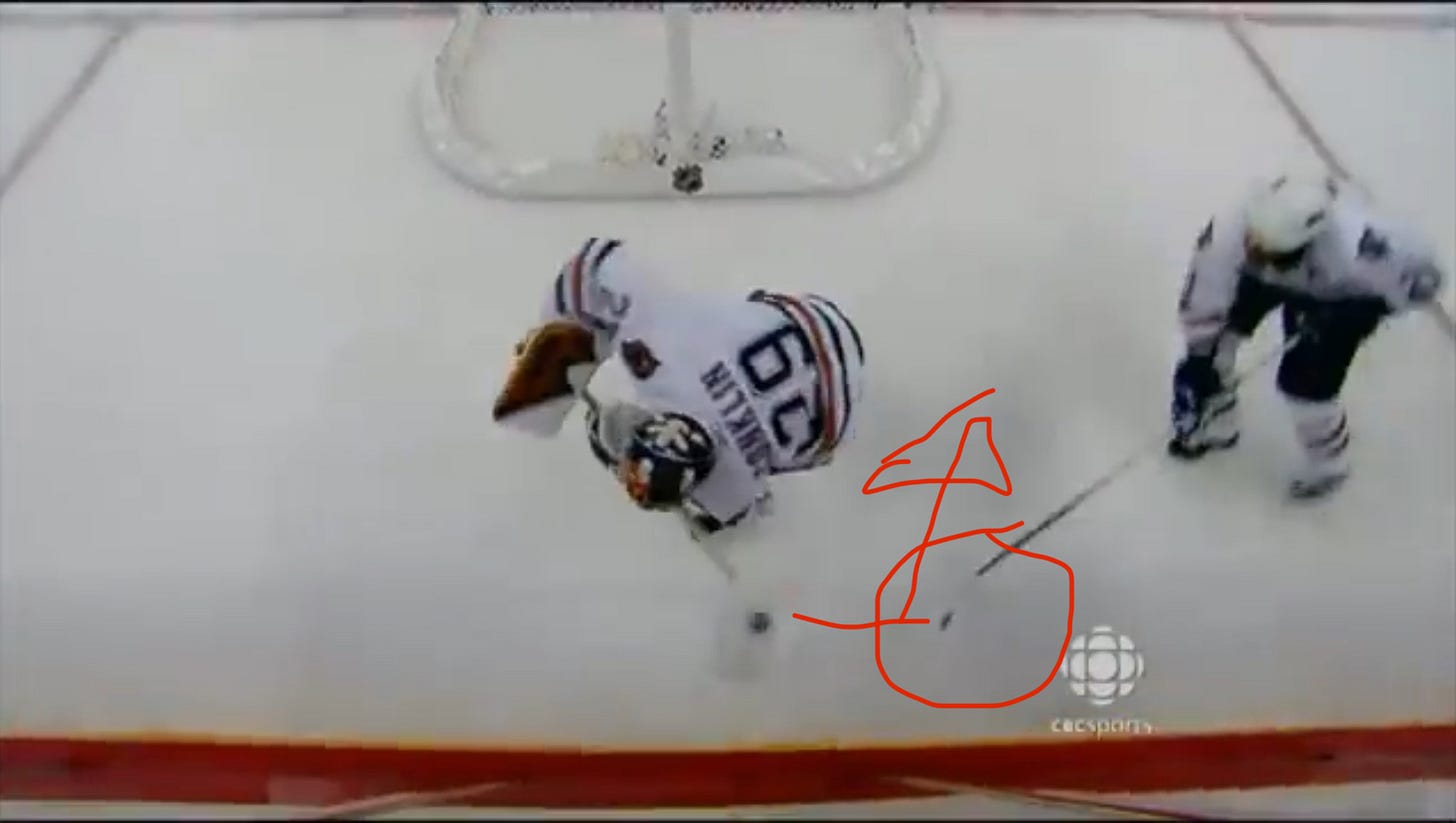
Conklin said after the game that he “just held onto to the puck too long”. Could he have moved it sooner? Probably. Could Jason Smith have read the play and seen that Conklin wasn’t going to leave the puck for him? Yes! Could Jason Smith have not had his stick in that position? Double yes! It’s the triple helping of (a) not reading the play properly, (b) thinking that the play was to wheel the puck right into Brind’Amour, and (c) flailing after the bobble and failing to corral either the puck or the man (ie Brind’Amour) that damns Smith here for me. He’s also the guy with a much more mobile stick, no catching glove, and no pads here.
But what’s easier to believe: the stalwart captain made an uncharacteristic and inopportune mistake or the guy who sucked all season screwed up? It’s not hard to see why the blame was placed squarely on Conklin, even if at worst (from Conklin’s point of view) it was both their faults.
The Short End of the Stick-handling
The 2005-06 Oilers had one of the more egalitarian game distributions of games I’ve seen for goalies. It’s always strange to see crease carousels of 5 or more goalies, but more fascinating to me are rotations that don’t even have a goalie reaching 33 games played. This is because the Oilers’ tandem to start the year of Jussi Markkanen and Ty Conklin both posted GA%-’s over 120. Mike Morrison held the starter’s role for parts of November and was the backup for some parts of the rest of the season. Conklin had been put on waivers twice that season and Markkanen, who lead the Oilers’ goalie rotation with 38 games played, hadn’t played a game since being pulled on March 1st, 2006.
But the question remains: why did MacTavish essentially say “Conklin is our second-best goalie right now” by dressing him for game 1 of the Stanley Cup Final and then starting Markkanen for games 2-7? Well, because MacTavish was rotating his backup goalies.
Wait, what?!
This decision to rotate backups by MacTavish is truly baffling to me. This is like when you’re trying to plan going out for dinner with someone, presenting them with two possible restaurants, them saying they’re good with either only to resent you for picking the one they actually didn’t want to go to. If you had a preference, Craig, why didn’t you tell me before I made the reservations at Conklin’s Cookhouse?!
At the end of the day, hindsight vindicates the choice of Markkanen whose game 2 can be excused by his long hiatus from game action and games 3-7 were evidently good enough to prolong the series to 7 games.
But it can be both true that Markkanen should have been the guy on the bench at the start of game 1 of the final and that Conklin doesn’t deserve the flack for this goal.


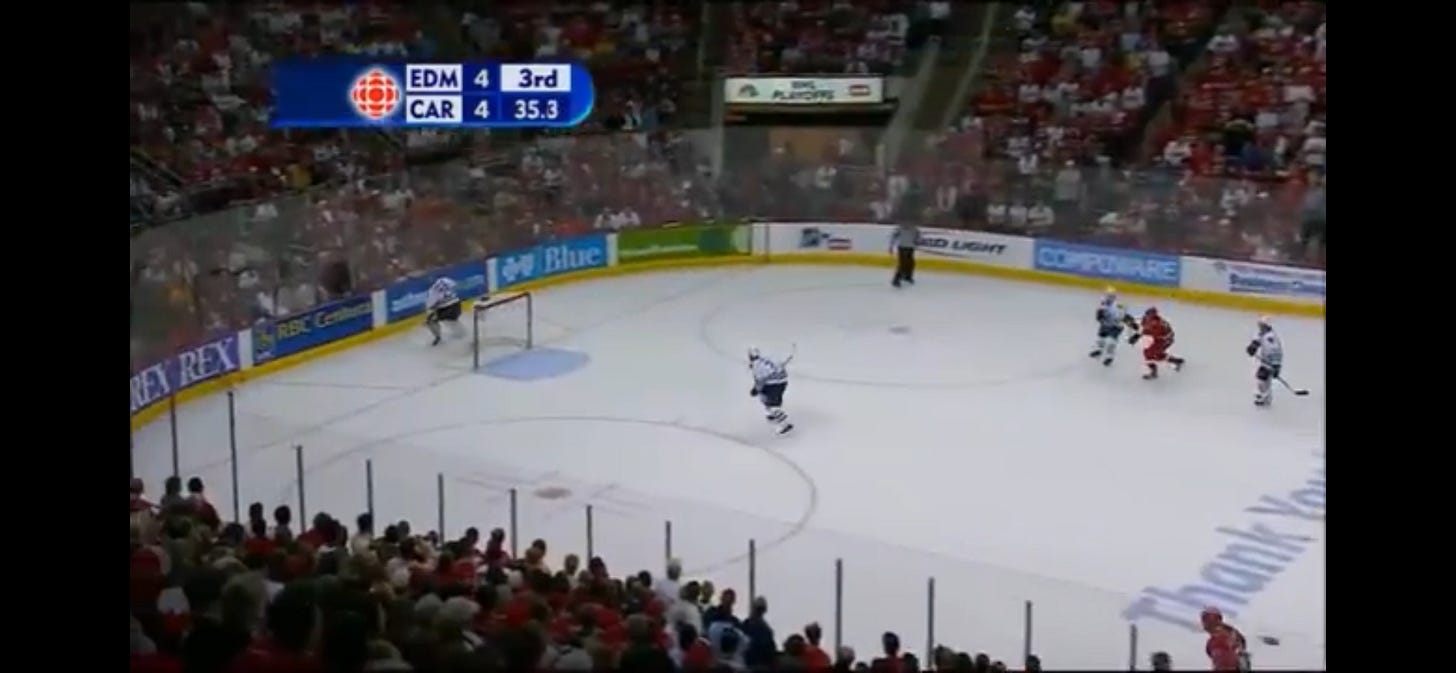
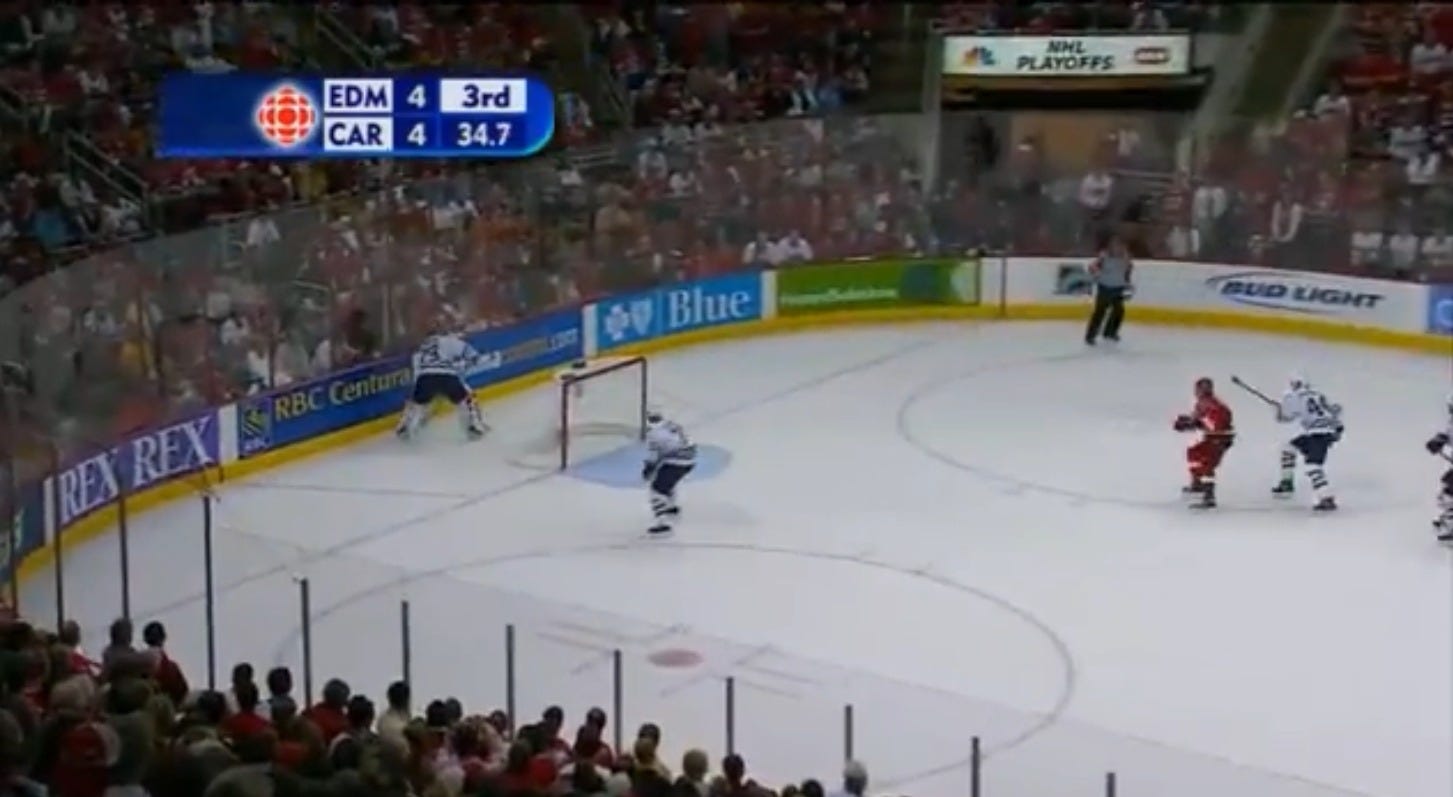

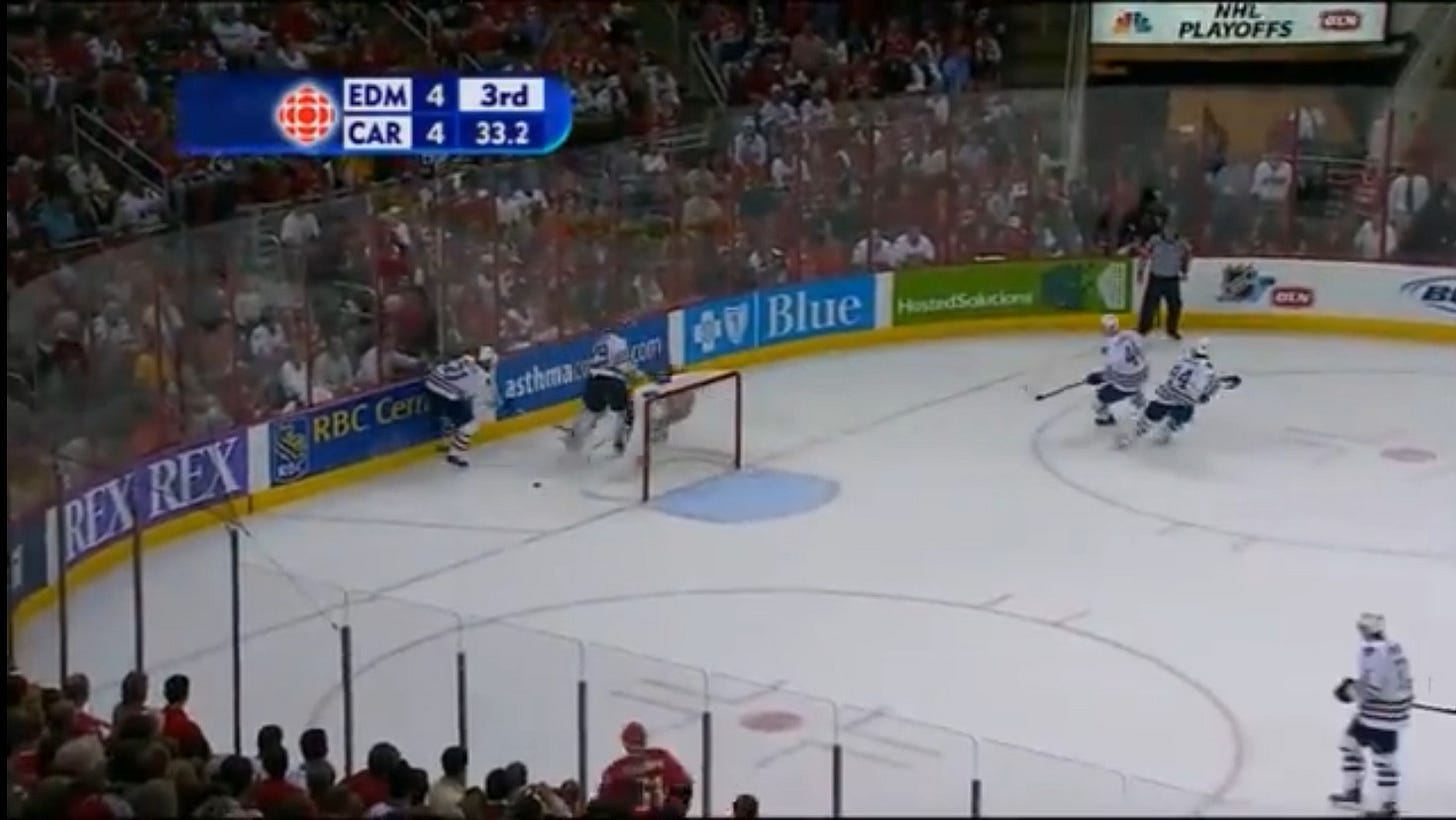
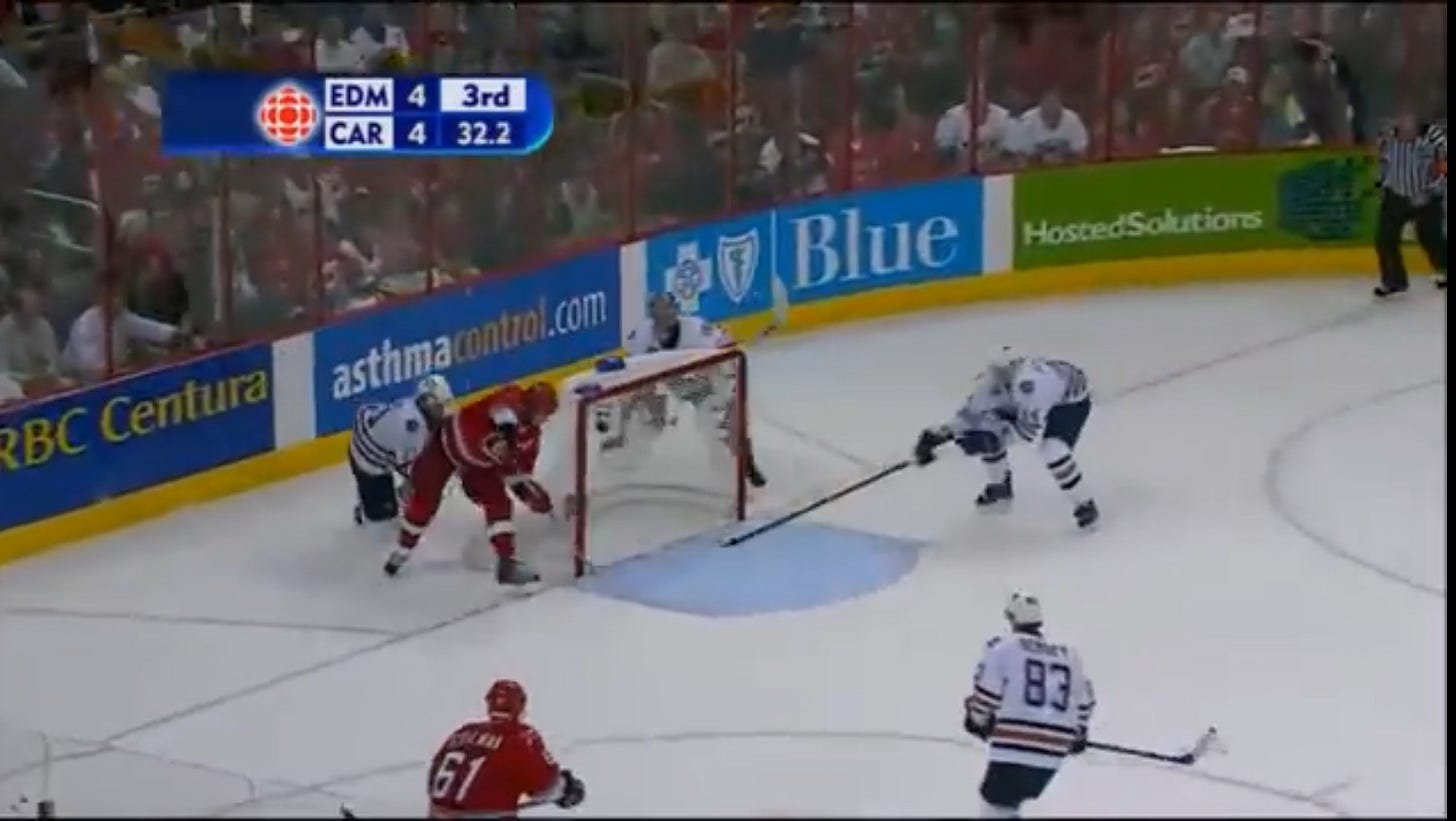
Another fantastic one in your rear view buddy!
I had entirely forgotten about this moment, but as soon as I got into it I knew what was coming. Like most others, all I remembered about this moment was Ty Conklin. I didn't even remember Jason Smith was there, and I certainly didn't remember that the fault for this calamity was mainly his!
Things like this are what sports desperately need. Ruthless attacks on 'path of least resistance' narratives that develop simply because people don't want to think very hard about things. 'Bad goaltender bad' is such an easy thought process that most people likely didn't even watch the play back a second time to see what actually happened. They've just been blaming Ty Conklin for the last 20 years. Things like this make me wonder how many other narratives out there are just lazy half-baked things said by people who didn't want to think very hard.